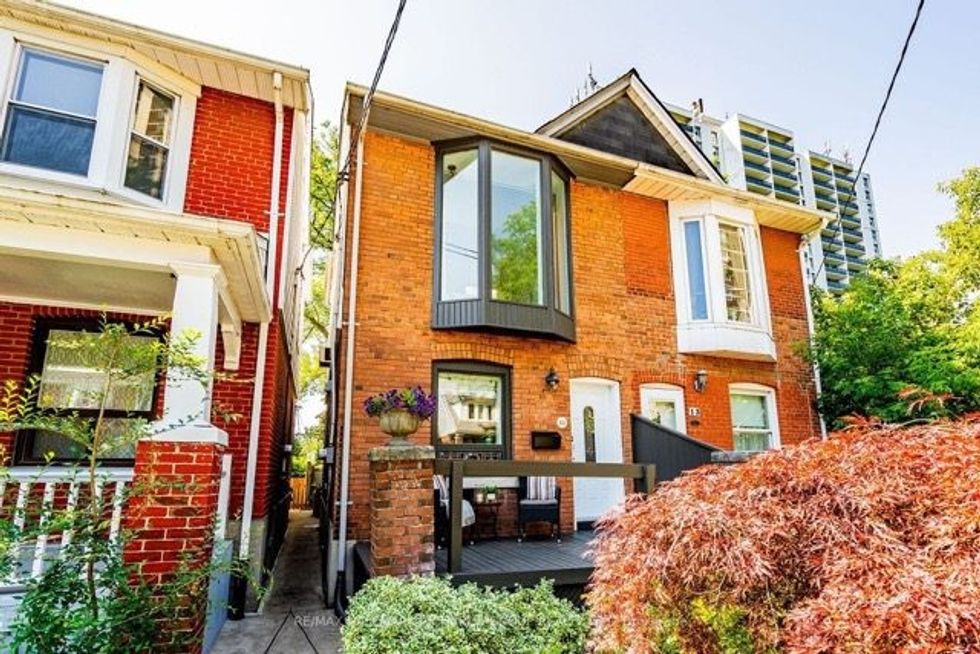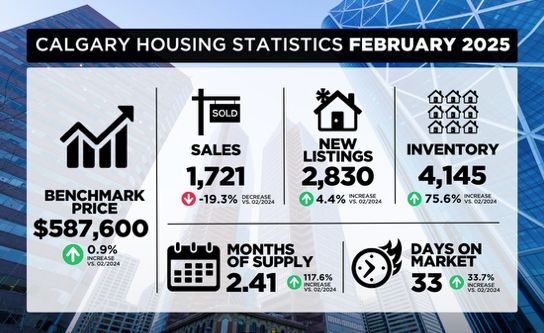Calgary housing market report: June 2023 update

Calgary’s housing market witnessed another strong month of sales and price growth in June 2023, as low inventory and high demand continued to drive the market. According to WOWA.ca, a real estate data and analytics platform, Calgary’s average sold price for all property types reached $554,443 in
Read MoreCalgary housing market expected to stabilize in 2023

The Calgary Real Estate Board (CREB®) has released its 2023 Forecast Calgary and Region Yearly Outlook Report, which provides a detailed analysis of the economic and housing market trends in Calgary and surrounding areas for the upcoming year. According to the report, elevated lending rates are
Read MoreCalgary homebuyers’ guide: How to navigate the hot market

If you’re looking to buy a home in Calgary, you might be feeling overwhelmed by the current market conditions. With record-high sales, low inventory and rising prices, finding your dream home can be challenging and stressful. But don’t worry, we’re here to help you navigate the hot market and ma
Read MoreCalgary real estate sets another sales record as tight conditions persist

Calgary’s real estate market continues to defy expectations as it set another record for sales in June. According to the Calgary Real Estate Board (CREB), there were 3,146 sales in June, up 10.9 per cent from the same month last year and 65.7 per cent above long-term averages. The strong demand
Read MoreCanada’s Largest Real Estate Markets Saw Supply Outpace Population: Stat Can

Chris Alexander, president of Re/Max Canada, talks to the Financial Post’s Larysa Harapyn about how the recreational real estate market has returned to normal levels after the feverish pace of 2020 and 2021, and what to expect from the market across the country this summer. Canada’s national
Read MoreFrom Listings To Leases, Virtual Staging Is Changing The Property Marketing Game

In just a day or two, North York-based interior design and home staging firm, A Lady’s Touch (ALT), can completely transform a room, outfitting it with fresh furniture, better lighting, or a completely different design style. And they can do so without any heavy lifting, so to speak. “We sta
Read MoreGap between Canada’s rich and poor widens at record pace on inflation, higher rates

Younger households bearing the brunt of the financial pain, says Statistics Canada The rising cost of living is squeezing Canadians’ finances. PHOTO BY GETTY IMAGES/ISTOCKPHOTO Inflation, higher interest rates and declining real estate values are worsening wealth inequality in Canada, with yo
Read MoreOntario government proposing changes to crack down on huge pre-construction price hikes

Homebuyers, lawyers say proposals a step in right direction, but have concerns Homebuyer Jennifer LeFeuvre says she is in a sort of limbo after developer Briarwood Development Group told her they were tacking on an extra $175,000 charge for her new home, on top of the initial cost laid out in a
Read MoreCanada’s office vacancy rate climbed to its highest level in nearly 30 years last quarter

Office towers, condos and apartment buildings are seen in downtown and the west end of Vancouver, on Thursday, January 19, 2023. A report by commercial real estate firm CBRE says the national office vacancy rate in Canada climbed in the second quarter to its highest level since 1994.THE CANADIAN PR
Read MoreShovel-ready land shortage exacerbates housing crisis in the Greater Golden Horseshoe

In the face of a housing crisis, recent reports suggesting that the Greater Golden Horseshoe (GGH) has enough land to meet the Ontario government’s target of building 1.5 million housing units by 2031 have overlooked a critical aspect — the availability of shovel-ready sites. A recent study
Read MoreNew Canadians Account For Over One-Third Of New Home Buyers In Ontario

More than one-third of Ontarians who plan to purchase a pre-construction or newly built home were born outside of Canada, according to Tarion’s New Home Buyers Report. Of the Ontario residents who intend to buy a new home within the next year, 35% were born in another country, while 4% were
Read MoreDemand is high — and inventory is limited — in Windsor’s booming industrial real estate market

The former Windsor Star printing facility, listed at $7.4 million, was sold recently, pending the closure of the sale later this summer. Experts said that and other sales indicate strong demand in Windsor’s industrial, commercial and investment (ICI) real estate market. (Dale Molnar/CBC) Like th
Read MoreOffice conversions could bring some relief for housing crunch

Increasing the apartment rental pool with office conversions may prove quick response to wave of immigration expected in coming year. Calgary’s efforts to transform office buildings — struggling with high vacancy rates — into thriving residential rentals has garnered plenty of attention lately a
Read MoreSurge of buyers speed up Canada’s housing market recovery: RBC report

RBC Economics report finds sales growth in some Canadian markets while listings remain tight. Buyers flocking back to the resale market this spring have sped up the recovery in Canadian residential real estate, a new report suggests. RBC Economics looked at May data across six major markets,
Read MorePlanned Wing Kei Village expanding quality care for seniors in Calgary

It’s been 18 years since the late Don Jung and a number of his business and church friends stood proudly at the grand opening of Wing Kei Crescent Heights, a nursing home they had planned, raised financing for and built to preserve and improve the quality of life for seniors. Located on Centre S
Read MoreDown payments getting further out of reach for first-time homebuyers in Calgary: report

“Home ownership has shifted from an aspiration for most to a privilege for the few” Calgary’s real estate market may continue to break records but the dream of home ownership is becoming harder to reach for many first-time homebuyers. A report Thursday by Royal LePage shows 69 per cent of fir
Read MoreCalgary developer plans to transform high-profile corner with luxury condos

A local property developer is taking a big bet on a high-profile location in Calgary’s Kensington neighbourhood along the Bow River. Dubbed “The Kenten,” the property sits at the corner of Memorial Driveand 10th Street Northwest. “We are transforming this corner. It’s going to be a redeve
Read MoreWhat $1M Can Get You In 5 Major Canadian Cities

While $1M is well below the average home price in Canada’s most expensive real estate markets, the price point leaves you spoiled for choice in several other cities across the country. From coast to coast, major real estate markets harbour houses — not condos — below the $1M mark. While a seven
Read MoreHomebuyers and homeowners struggle with ‘obscenely’ high building costs

A housing development on the edge of the Ontario Green Belt in the Greater Toronto Area of Bradford West Gwillimbury, Ont., on May 25.says Exorbitant construction costs for residential real estate across much of Canada are exacerbating the country’s housing affordability crisis and creating
Read MoreGTA real estate market: Overbidding frenzy continues

Competition among homebuyers in the Greater Toronto Area (GTA) reached new heights last month as more neighbourhoods entered the realm of overbidding. According to a recent analysis by Wahi, 68 per cent of GTA neighbourhoods experienced overbidding in May, up from 57 per cent in April, refl
Read More
Categories
Recent Posts











